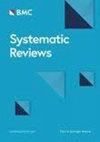Clinical value of serum neuron-specific enolase in sepsis-associated encephalopathy: a systematic review and meta-analysis
IF 6.3
4区 医学
Q1 MEDICINE, GENERAL & INTERNAL
引用次数: 0
Abstract
This study aimed to investigate the serum levels of neuron-specific enolase (NSE) in sepsis-associated encephalopathy (SAE) and perform a meta-analysis to assess the diagnostic and prognostic potential of serum NSE in SAE patients. We searched English and Chinese databases for studies related to SAE that reported serum NSE levels until November 2023. We extracted information from these studies including the first author and year of publication, the number of samples, the gender and age of patients, the collection time of blood samples in patients, the assay method of serum NSE, the study methods, and the levels of serum NSE with units of ng/mL. The quality assessment of diagnostic accuracy studies 2 (QUADAS-2) tool was used to evaluate the study quality. A meta-analysis was performed using Review Manager version 5.3, employing either a random effects model or a fixed effects model. A total of 17 studies were included in the final meta-analysis, including 682 SAE patients and 946 NE patients. The meta-analysis demonstrated significantly higher serum NSE levels in SAE patients compared to NE patients (Z = 5.97, P < 0.001, MD = 7.79, 95%CI 5.23–10.34), irrespective of the method used for serum NSE detection (Z = 6.15, P < 0.001, mean difference [MD] = 7.75, 95%CI 5.28–10.22) and the study methods (Z = 5.97, P < 0.001, MD = 7.79, 95%CI 5.23–10.34). Furthermore, sepsis patients with a favorable outcome showed significantly lower levels of serum NSE compared to those with an unfavorable outcome (death or adverse neurological outcomes) (Z = 5.44, P < 0.001, MD = − 5.34, 95%CI − 7.26–3.42). The Serum level of NSE in SAE patients was significantly higher than that in septic patients without encephalopathy. The higher the serum NSE level in SAE patients, the higher their mortality rate and incidence of adverse neurological outcomes.血清神经元特异性烯醇化酶在脓毒症相关脑病中的临床价值:系统回顾和荟萃分析
本研究旨在调查脓毒症相关脑病(SAE)患者血清中神经元特异性烯醇化酶(NSE)的水平,并进行荟萃分析以评估SAE患者血清NSE的诊断和预后潜力。我们在中英文数据库中检索了截至 2023 年 11 月报告血清 NSE 水平的 SAE 相关研究。我们提取了这些研究的信息,包括第一作者和发表年份、样本数量、患者性别和年龄、患者血样采集时间、血清 NSE 检测方法、研究方法和以 ng/mL 为单位的血清 NSE 水平。诊断准确性研究质量评估 2 (QUADAS-2) 工具用于评估研究质量。采用随机效应模型或固定效应模型,使用 Review Manager 5.3 版进行了荟萃分析。最终的荟萃分析共纳入了 17 项研究,包括 682 名 SAE 患者和 946 名 NE 患者。荟萃分析表明,与 NE 患者相比,SAE 患者的血清 NSE 水平明显更高(Z = 5.97,P < 0.001,MD = 7.79,95%CI 5.23-10.34),与检测血清 NSE 的方法(Z = 6.15,P < 0.001,平均差 [MD] = 7.75,95%CI 5.28-10.22)和研究方法(Z = 5.97,P < 0.001,MD = 7.79,95%CI 5.23-10.34)无关。此外,与预后不良(死亡或神经系统不良预后)的患者相比,预后良好的脓毒症患者血清 NSE 水平明显较低(Z = 5.44,P <0.001,MD = - 5.34,95%CI - 7.26-3.42)。SAE 患者的血清 NSE 水平明显高于无脑病的败血症患者。SAE患者的血清NSE水平越高,其死亡率和不良神经系统后果的发生率就越高。
本文章由计算机程序翻译,如有差异,请以英文原文为准。
求助全文
约1分钟内获得全文
求助全文
来源期刊

Systematic Reviews
Medicine-Medicine (miscellaneous)
CiteScore
8.30
自引率
0.00%
发文量
241
审稿时长
11 weeks
期刊介绍:
Systematic Reviews encompasses all aspects of the design, conduct and reporting of systematic reviews. The journal publishes high quality systematic review products including systematic review protocols, systematic reviews related to a very broad definition of health, rapid reviews, updates of already completed systematic reviews, and methods research related to the science of systematic reviews, such as decision modelling. At this time Systematic Reviews does not accept reviews of in vitro studies. The journal also aims to ensure that the results of all well-conducted systematic reviews are published, regardless of their outcome.
 求助内容:
求助内容: 应助结果提醒方式:
应助结果提醒方式:


